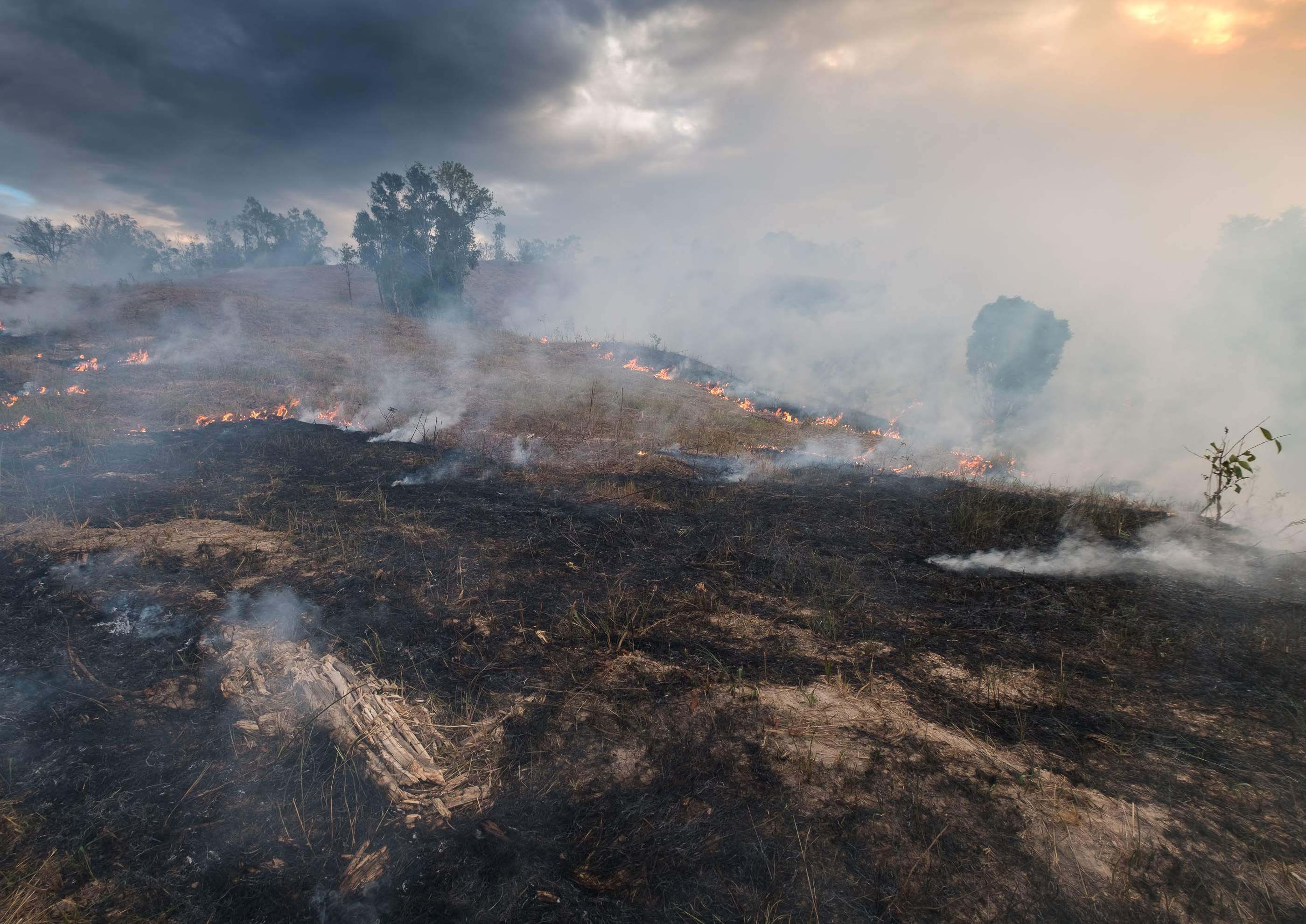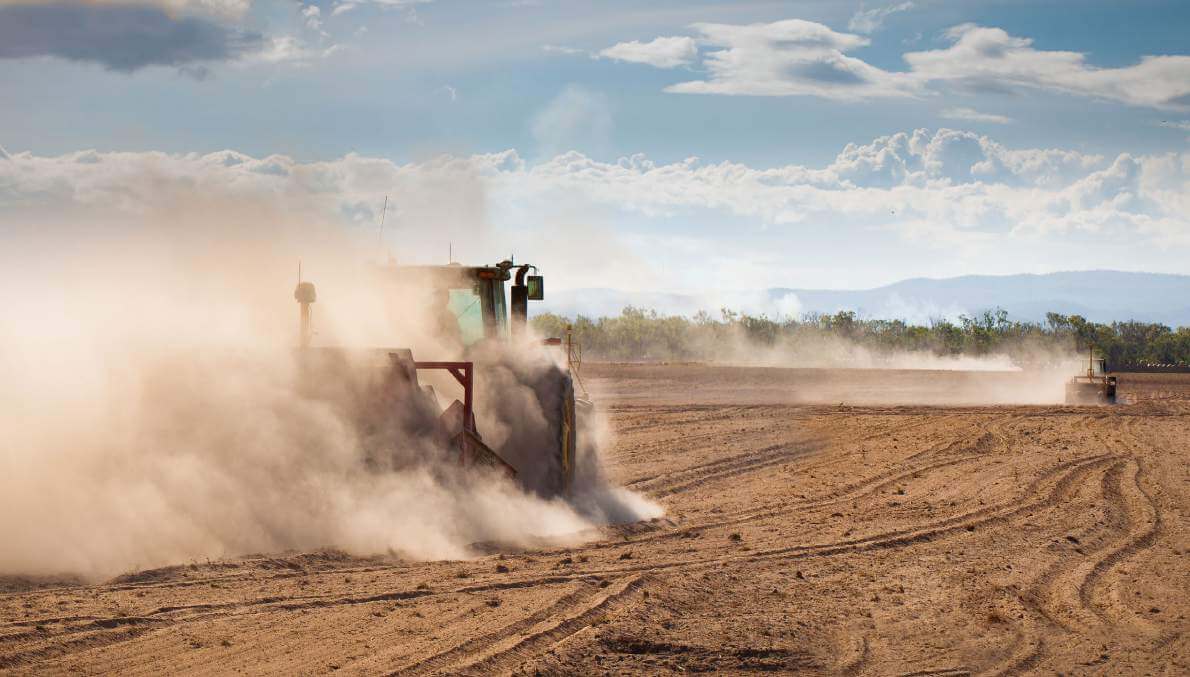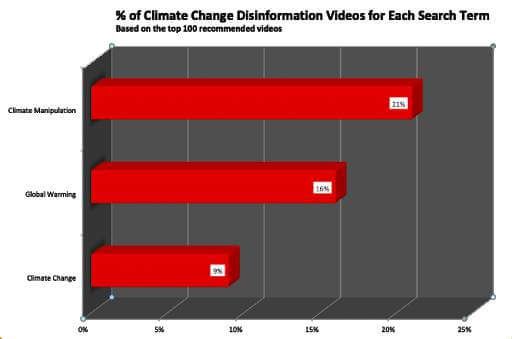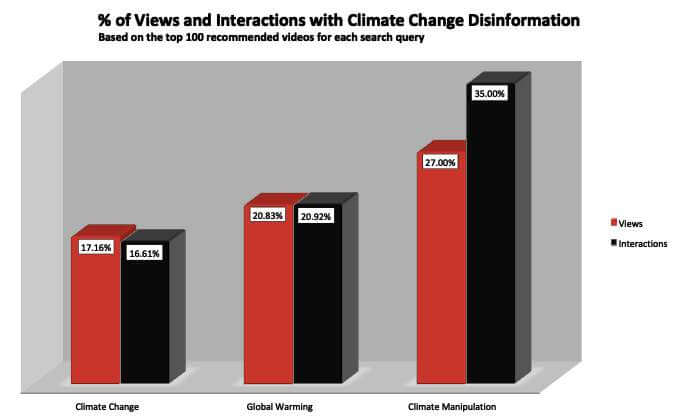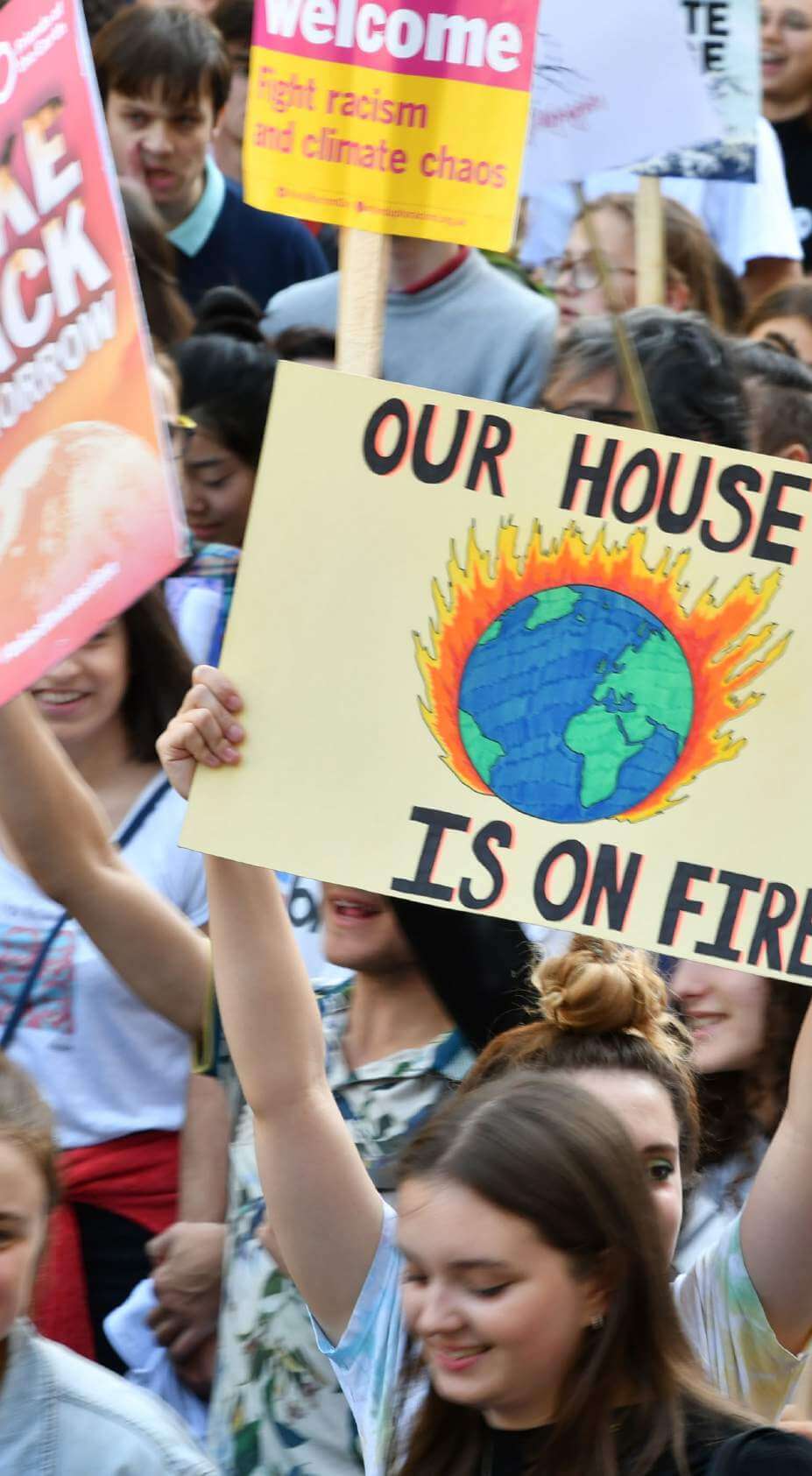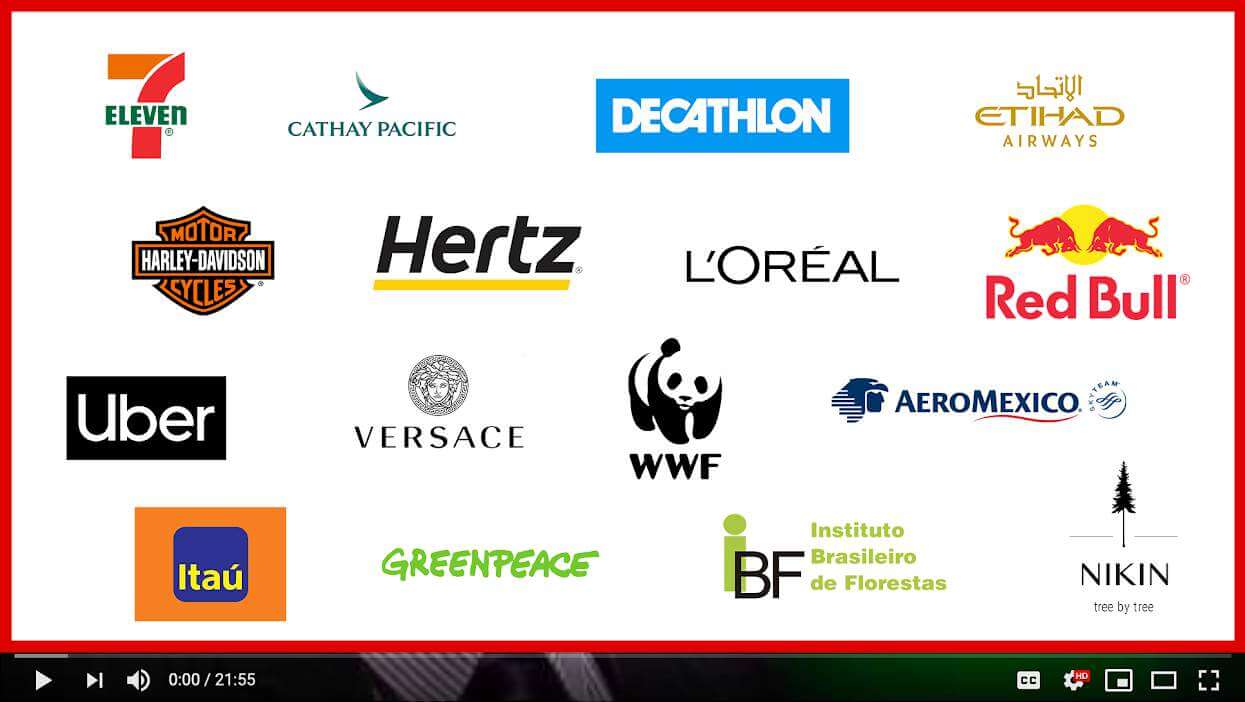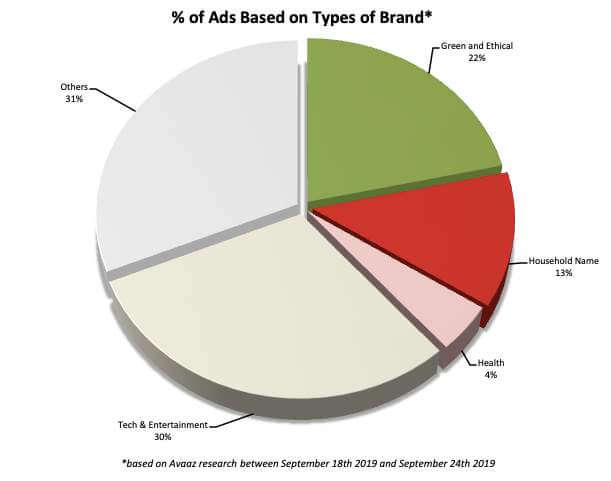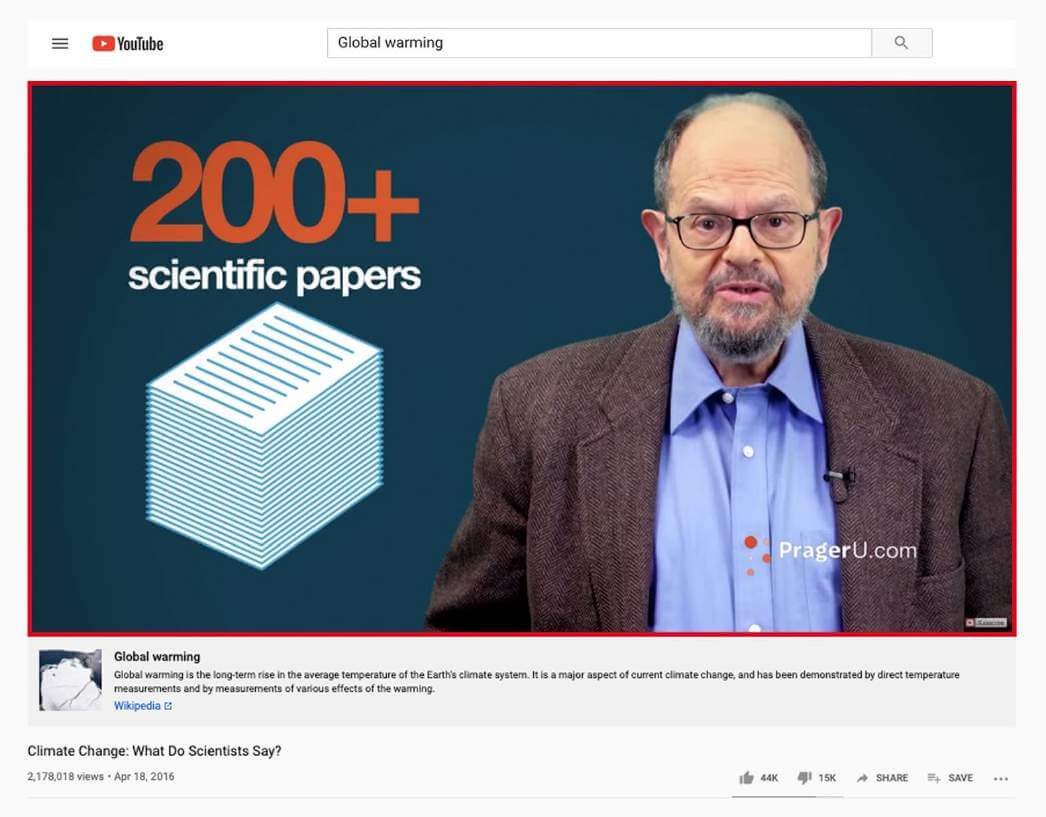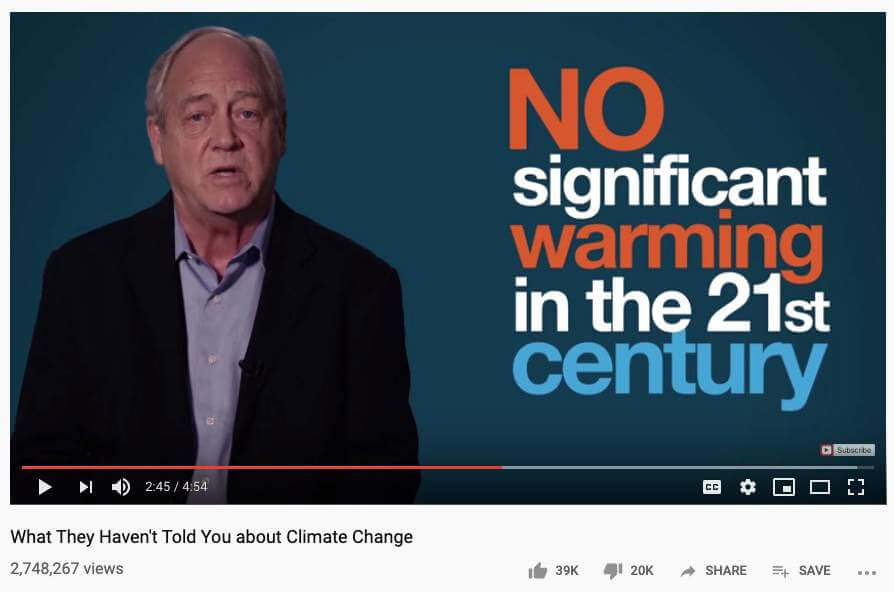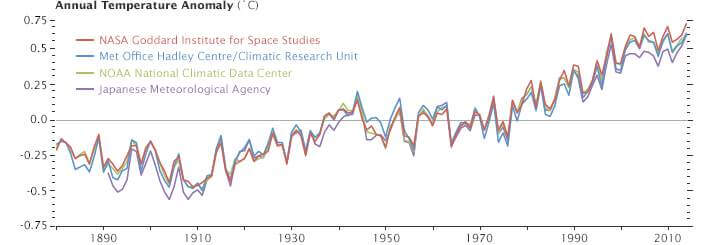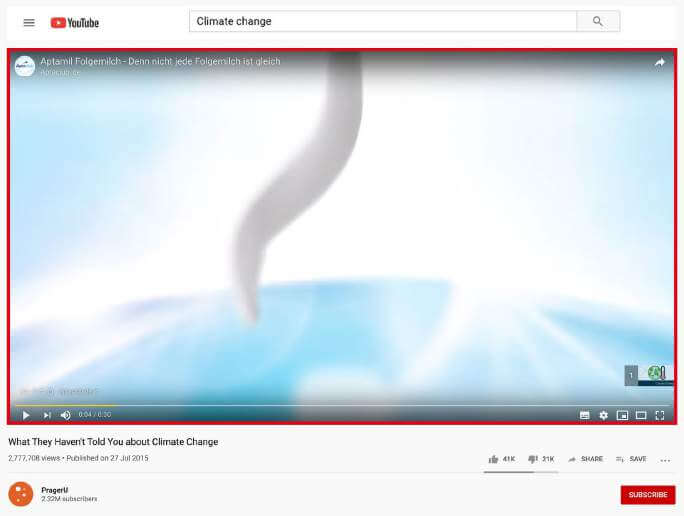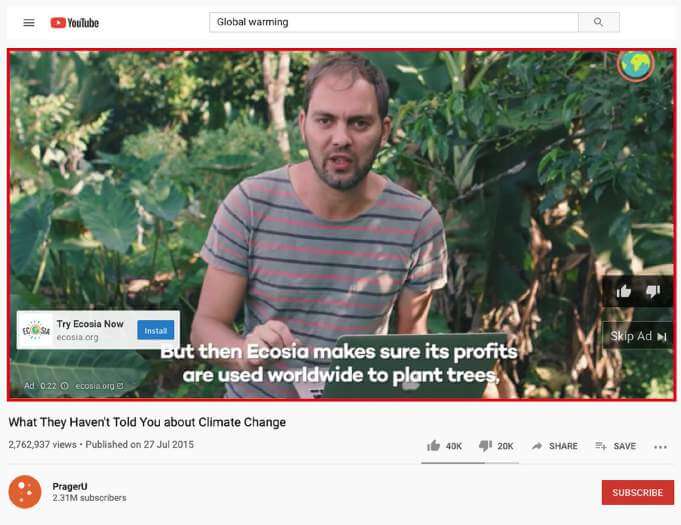YouTube’s tremendous reach - and control over the content on its site - is unprecedented in media history. People around the globe spend2 a billion hours on YouTube every day, and the platform has two billion monthly active users, 3 which is more than all the households with TVs4 in the entire world. Even more significant when it comes to audience influence, YouTube is able to reach more 18-34 year olds than any cable network in the United States. 5 Today, YouTube is the preferred platform for teenagers, according to a recent study6 conducted by the Pew Research Center in the US, with 85% of teenagers (ages 13–17) saying they use the platform.
In 2015, YouTube launched a campaign7 to “help change the way people discuss climate change, so that the issue and its consequences could become more relevant and tangible to people around the world.” In addition, in Google’s February 2019 Whitepaper on fighting disinformation, YouTube’s parent company made it clear that: “We set out to prevent our systems from serving up content that could misinform users in a harmful way, particularly in domains that rely on veracity, such as science, medicine, news, or historical events. To that end, we introduced a higher bar for videos that are promoted through the YouTube homepage or that are surfaced to users through the “watch next” recommendations. Just because content is available on the site, it does not mean that it will display as prominently throughout the recommendation engine."8
With this report Avaaz set out to analyse how effectively YouTube is protecting its users from climate misinformation, and how well it’s implementing the commitments it made last February specifically around its recommendation engine.
For this investigation, Avaaz examined the videos YouTube recommends to users when they search “global warming,” “climate change,” or “climate manipulation.” Specifically, we focused on the videos YouTube suggests to users in its ‘Up Next’ feature, below the video on the mobile app, and as the next video in autoplay. These YouTube promoted videos drive the vast majority9 of what users watch on the site.
We found that YouTube is driving millions of people to watch climate misinformation videos. These climate misinformation videos aren’t just being uploaded to YouTube and organically seen by interested audiences. Instead, YouTube’s recommendation algorithm is giving these videos free promotion and showing misinformation to millions who wouldn’t have been exposed to it otherwise.
Secondly, Avaaz found that YouTube is incentivizing this climate misinformation content via its monetization program. Every time an ad is shown on a YouTube video, the advertiser pays a fee,10 of which 55% goes to the video creator and the other 45% to YouTube.
Avaaz found that some of the largest household brands in the world, including Samsung, L’Oréal, Warner Bros, Carrefour, and Danone as well as two of the largest environmental groups in the world, Greenpeace International and World Wildlife Fund, have advertisements running on these climate misinformation videos.
2http://archive.fo/Dkygo
3http://archive.fo/BwINe
4http://archive.fo/g6Hrl
5http://archive.fo/D0hOY
6http://archive.fo/ZNnVh
7http://archive.fo/cNzAW
8https://kstatic.googleusercontent.com/... see page 20.
9“YouTube's product chief says for 70 percent of the time you watch, you're riding a chain of recommendations driven by artificial intelligence.”
https://www.cnet.com/news/youtube-ces-2018-neal-mohan/
10http://archive.is/ZgoxE
11For further details on how Avaaz came to these findings, see the Annex.
12See the Annex of this report for further details on how Avaaz defines “Related” and “Recommended” videos.



